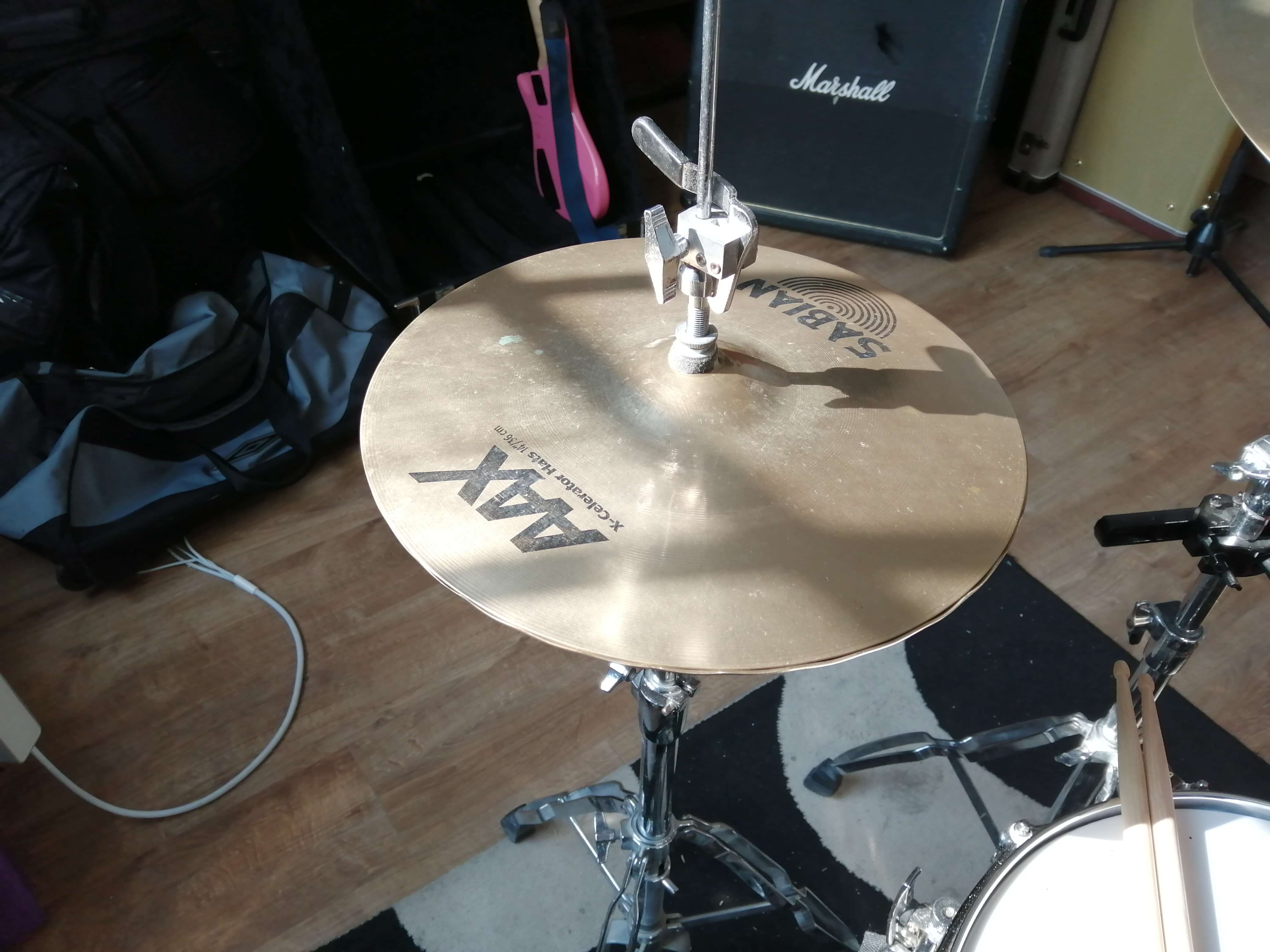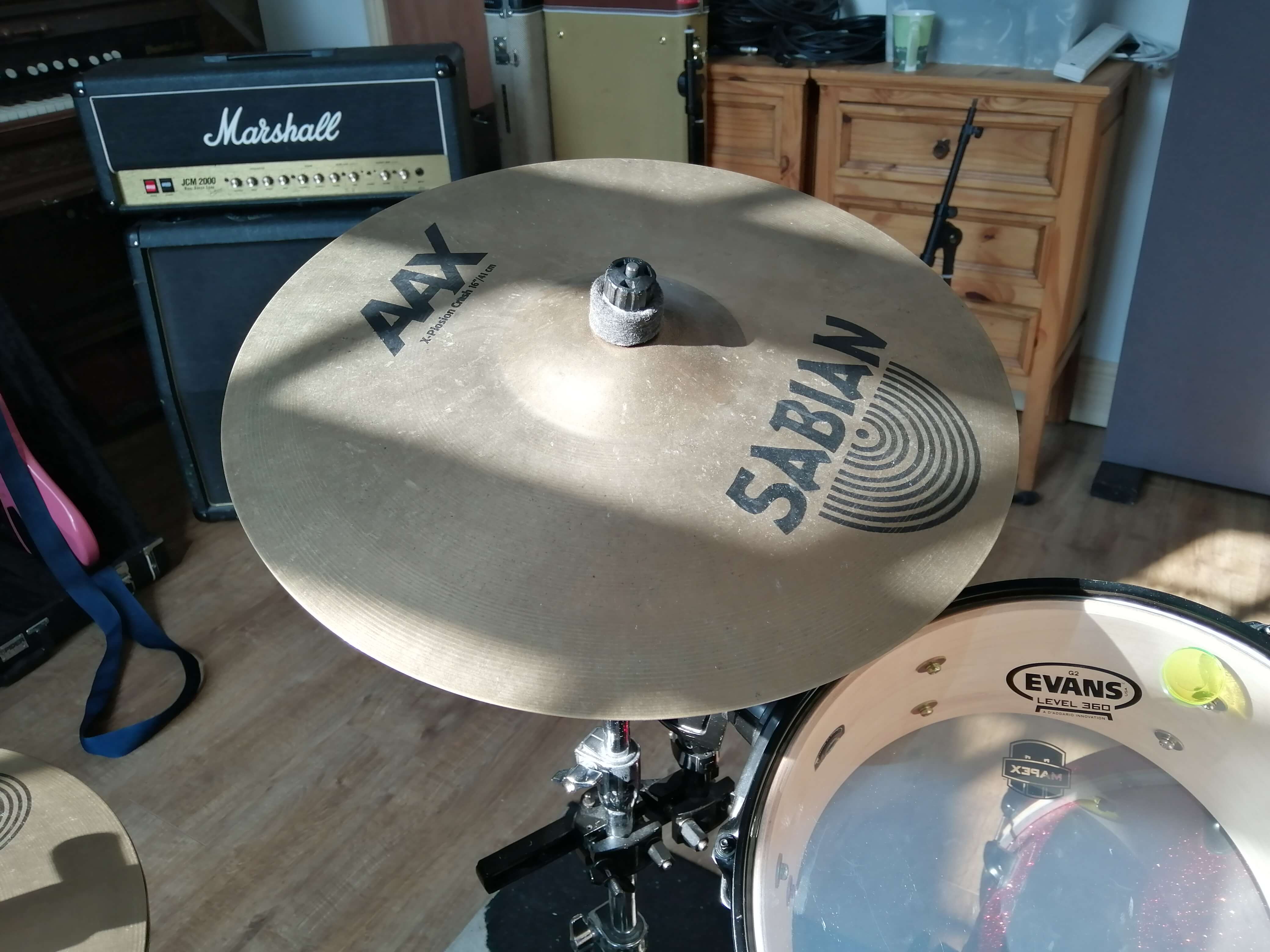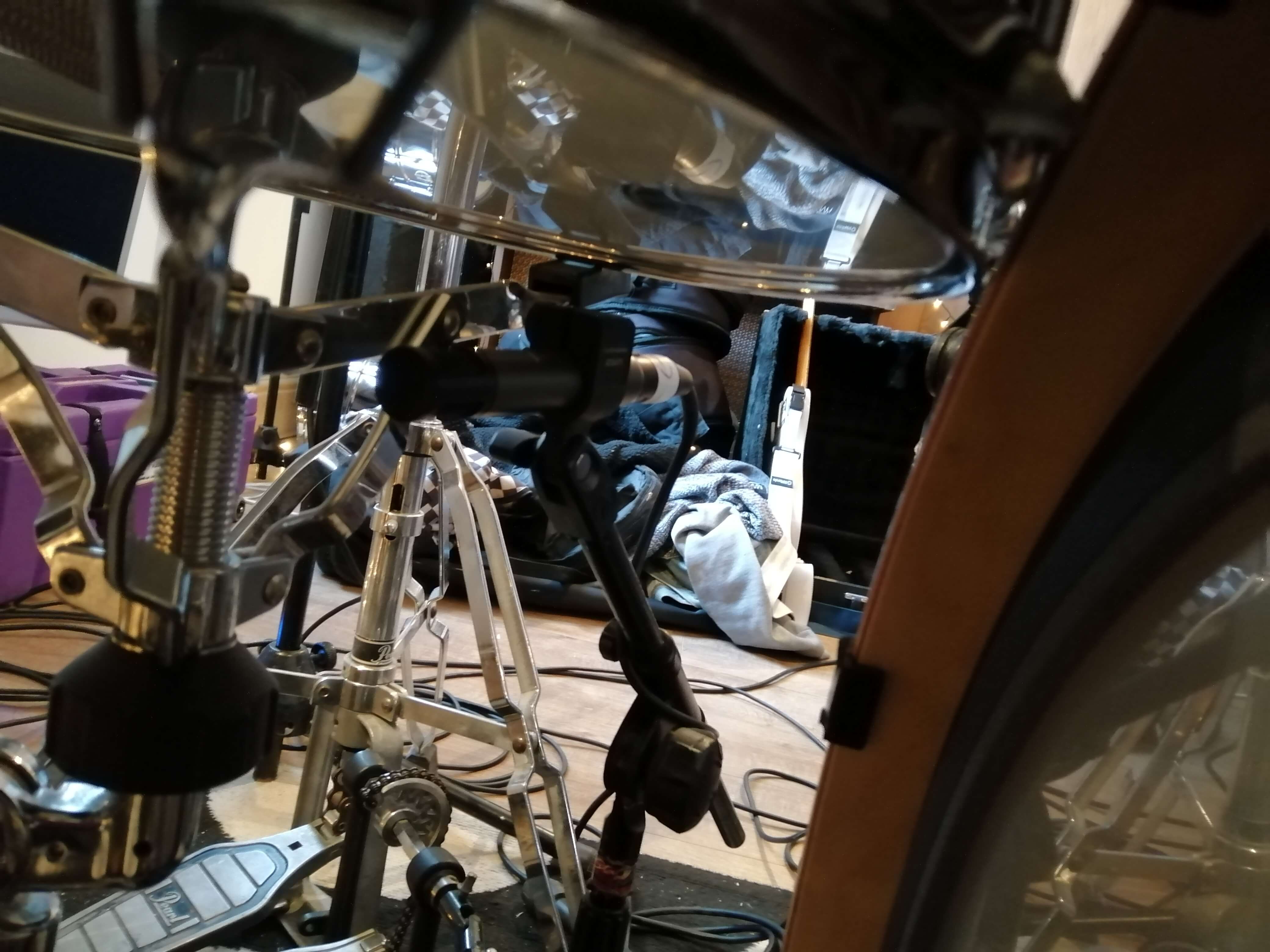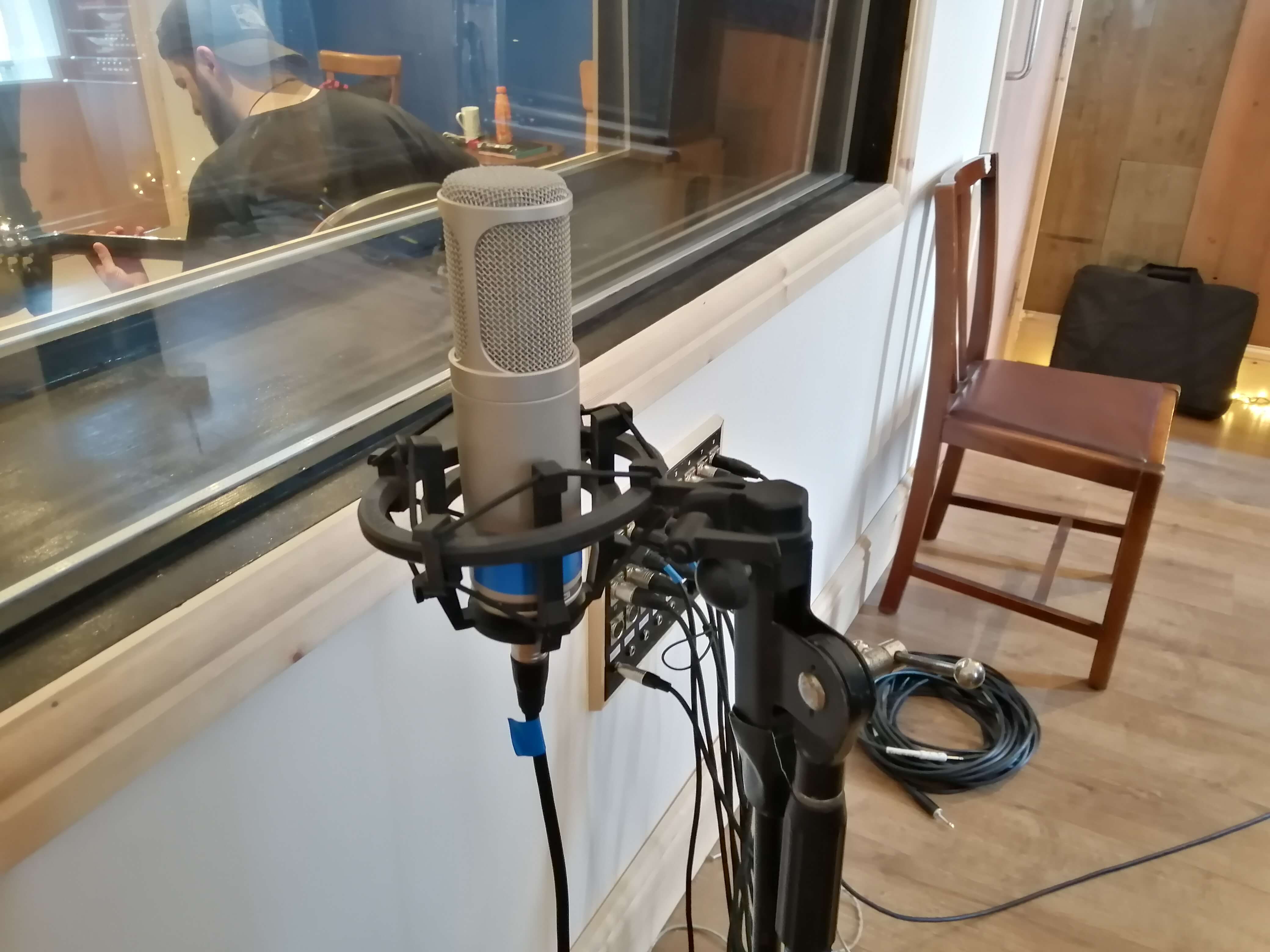


This is my personal drum kit that I brought into the studio. There was a number of reasons why I did this, the first being that it was better than the studio house kit. In addition to this, I knew exactly what condition this kit was in and I had faith that it would be in full working order. Another reason is that I am comfortable playing my kit and can modify it in any way that I want. I took advantage of this by putting all new heads on the drums and purchasing a drum tuning machine to make sure that my drums were sounding as good as they possibly could.










Here is a list of all the items I used for my drums:
Mapex Armory 6 piece drum kit (I only used the 12″ rack tom, 16″floor tom, 22″ bass drum and 14″ snare)
Sabian cymbals – 14″ x-celerator hi-hats, 16″ x-plosion crash, 18″x-plosion crash, 20″ stage ride
Evans drum heads – 12″ and 16″ g2 clear for the toms, 14″ HD dry snare head, 22″ EMAD heavyweight kick drum head.
Mapex Armory double bass drum pedal
Vic Firth extreme 5a drumsticks 

Audio Technica ATH-M50x headphones. These were the best studio monitors that I have ever used. When recording in the past, I have always struggled to hear whatever is coming through the headphones due to the volume of my own playing. However, with these headphones, I could hear everything perfectly clear, even over the sound of my drums, without having to have the volume ridiculously high. If we record again in the future I will look at getting a pair of these as they made tracking drums so much easier.

AKG D112 on the floor tom. We chose to use this mic on the floor tom as it is very good at picking up low frequencies. We decided this would be great as we wanted to have a low, punchy floor tom in the mix. The placement of this mic was the standard tom mic placement, three fingers away from the drum head and pointed towards the centre.

Oktava MK 012-01 overhead mics. We used these mics as overheads as they are really good at picking up higher frequencies and therefore were perfect for picking up the cymbals. They were placed roughly above each crash cymbal, equidistant from each other and the snare to avoid any phasing issues. 
RODE NT55 on the ride cymbal. We decided to mic up the ride cymbal because in Smackhead I go onto the bell of the ride which is very pingy. The traditional method of just miking up cymbals using two overheads wouldn’t have worked for this as it would have been too quiet. Directly miking the ride cymbal made it so the bell of the ride had definition when it came to mixing.

Sennheiser MD 421-II tom mic. This is often the go-to choice for tom microphones, and with good reason. This mic picked up all the clarity and definition from the drum whilst still being able to hear the dead punchiness that I wanted. Plain and simple, this was the perfect mic for the job as it is for so many others.

Shure SM57. The sure SM57 is one of the most common microphones in the world. It is genuinely known as a ‘jack of all trades’ mic. We used this on the snare batter as we wanted a fairly generic, dry sounding snare that would sit comfortably in the mix. I, as a drummer, thought this was very important as the most common thing that drummers critique about each others music, is the snare sound. This is why it was really important for me to have a good sounding snare that you can clearly hear but won’t make your ears bleed when listening to it. This microphone did exactly the job.


Audio-Technica ATM 450. We put a mic on the resonant head of the snare drum to give it more definition and punch. With a microphone on the bottom skin, you can hear the snare wires more clearly and it gives a certain depth that you can’t achieve from just putting a mic on the batter head.

Samson C02 for the hi-hats. These microphones have a very wide dynamic range, which is why we chose to use them for our recording. With my hi-hats, I tend to play around with the dynamics quite a bit, especially in Bad Habit. This is why we needed a microphone that could pick up quiet hits with clarity and definition, but not clip out when picking up hard hits.

AKG D112 Kick drum batter. We used this mic on the batter head of the kick drum as it can pick up the low-end punch really well. This is the same reason we used this mic on the floor tom. It also does a really good job of picking up the attack of the bass drum beater hitting the batter head. This was essential for me as I wanted my kick to be punchy and stand out in the mix since we use a low tuning on guitars and have a bass-heavy mix.
Audix D6 kick drum reso. This is one of the most common mics for kick drums, that’s because it’s very good at picking up low-end frequencies. For this reason, we put it at the porthole of my kick drum resonant head to capture the low-end frequencies coming out of the bass drum to give my overall bass drum mix some depth so it wasn’t all attack

This is just a picture of all of the microphones on my drum kit. It also shows how the bass traps were set up to stop unwanted frequencies from bouncing off the walls and back into the microphones.

Rode K2 room mic. This was the mic that we used to pick up the sound of the room. After all, it’d be a shame to waste such high ceilings. This microphone did a great job at picking up the drums as all the sounds bounced off the walls and ceiling. This gave a lot more depth to the drum sound and made them sound huge.

This is showing how far away the room mic was from the drum kit. The aim for this mic wasn’t to pick up the drums directly but to pick up the sound of the room with the drums in them.

Cascade FAT HEAD II ribbon mic to catch the frequencies bouncing off the floor. This gave a similar effect to what the main room mic did, but picked up more of the low end as it was closer to the floor. We used two of these mics, both at about a 45˚ from the drum stool


These pictures show the distance of each microphone from the drums.
Because Corner house recording studio is a purpose-built studio, the big live room with high ceilings was ideal for recording live drums in. Placing the kit widthways in the room also gave a huge difference to the sound for the better. All in all, I had a very good experience recording in Corner house recording studio and would definitely do it again.
